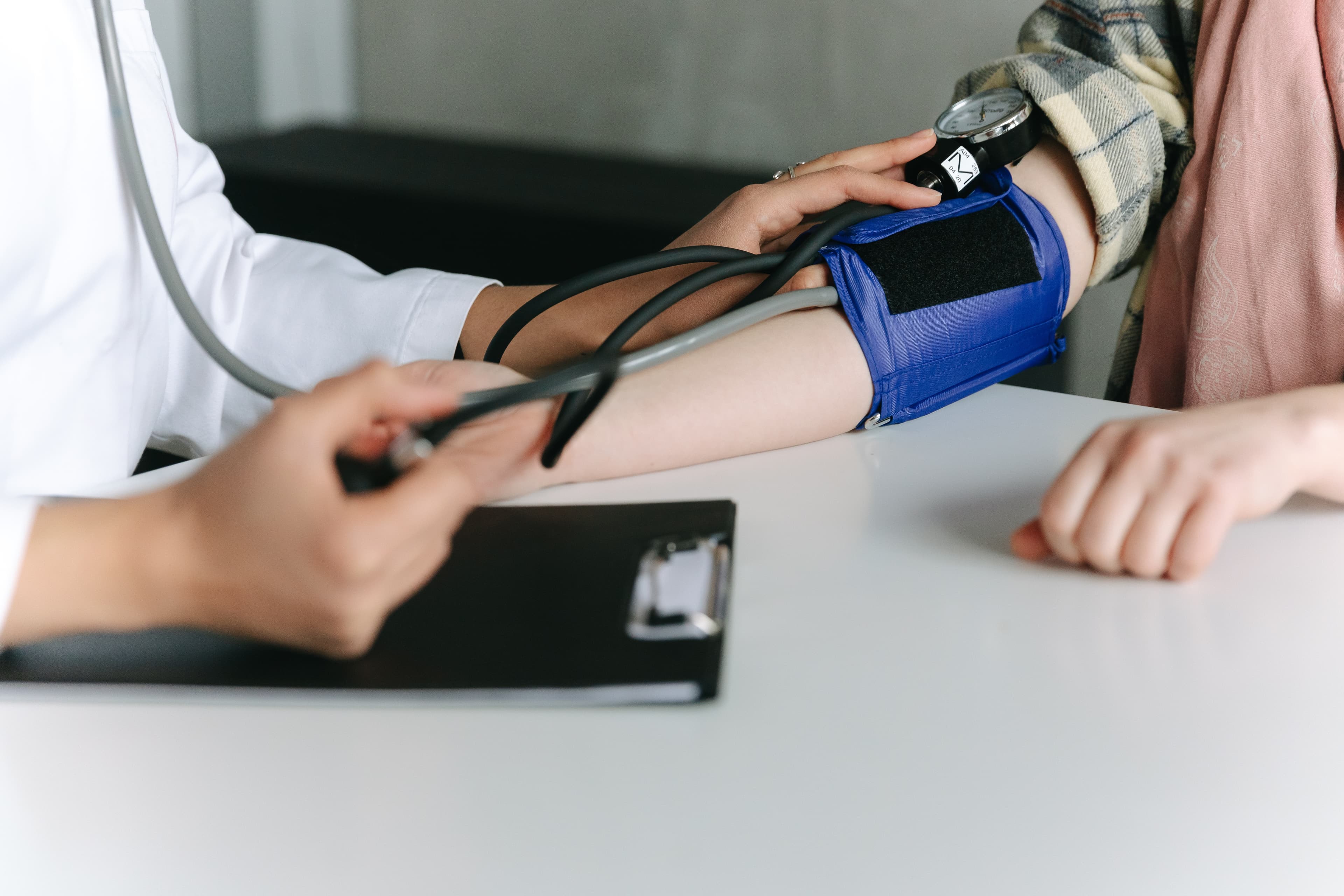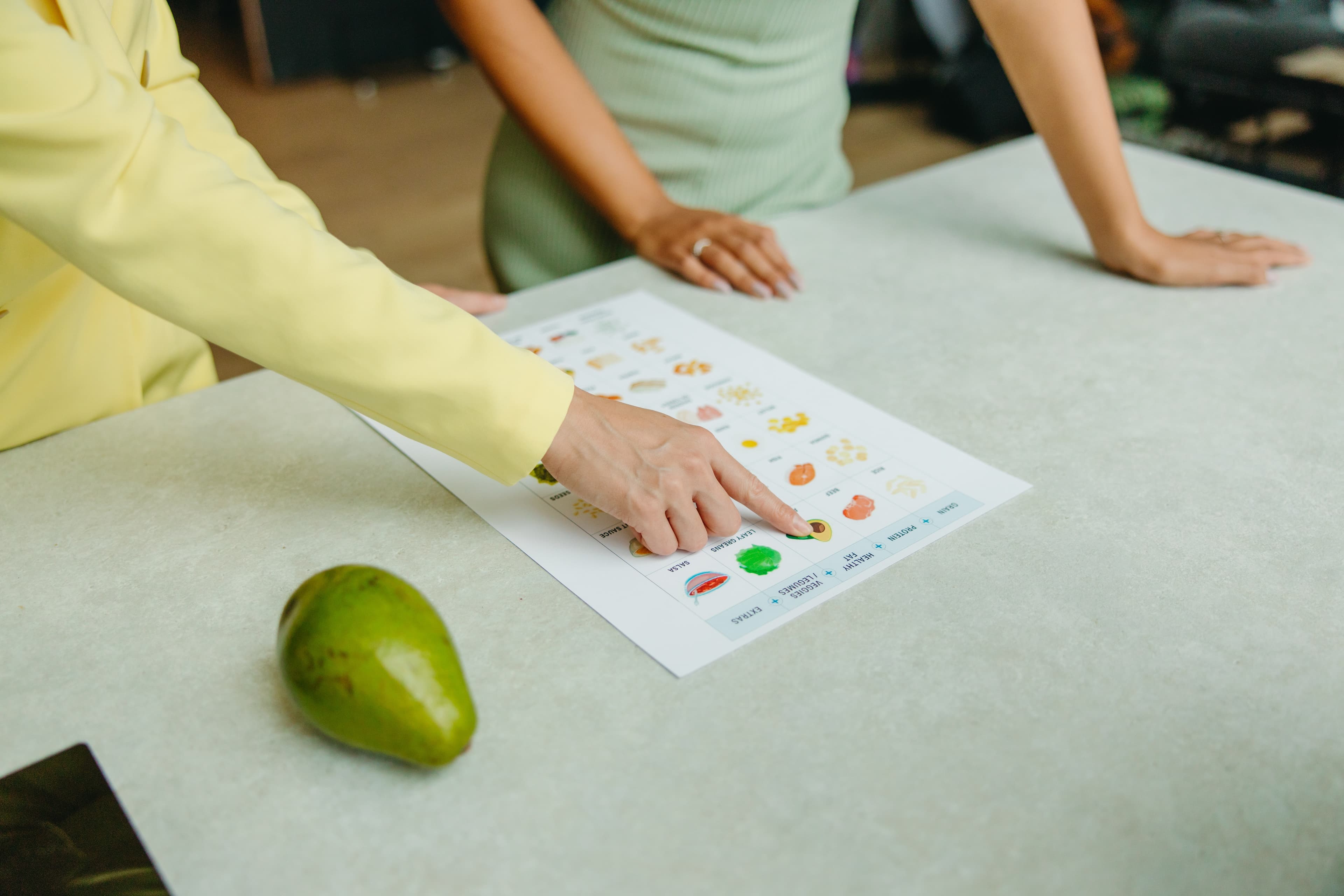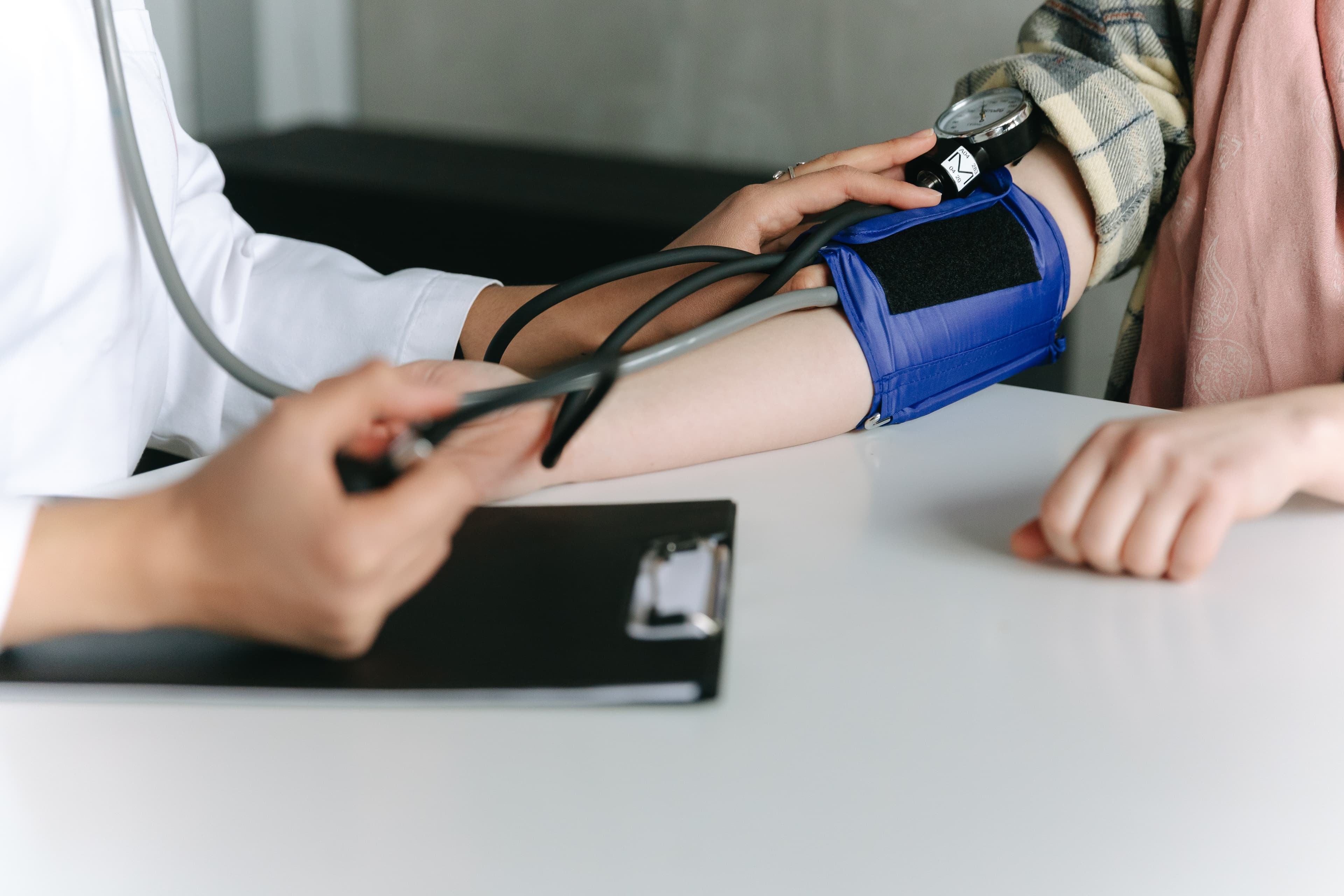Low blood pressure (hypotension) occurs when your blood pressure stays at below-normal levels for extended periods. It’s less common than high blood pressure (hypertension) but affects up to 30% of people ages 70 and older.
Hypotension doesn’t always present symptoms, but there are signs to watch out for. In this article, we explain the different types and make recommendations to keep it from getting worse.
What is Low Blood Pressure?
“Low blood pressure is when your blood pressure is lower than normal,” Dr. Linda Khoshaba, NMD, FABNE a board-certified Naturopathic Endocrinologist explains. “Normal blood pressure is considered to be between 90/60 mm Hg and 120/80 mm Hg. If your blood pressure is below 90/60 mm Hg, you may have low blood pressure.”
There are two types of low blood pressure:
Absolute Hypotension
This type of low blood pressure occurs when your resting blood pressure is 90/60 mm Hg or below.
Orthostatic or Postural Hypotension
This type of low blood pressure occurs when your blood pressure remains low for more than three minutes after you stand up from a sitting or lying position.
To have this type of blood pressure your systolic blood pressure (top number) must drop by at least 20 mm Hg and your diastolic blood pressure (bottom number) must drop by at least 10 mm Hg.
What You’ll Need
All you need to manage low blood pressure is a home blood pressure monitor and a commitment to healthy living.
Healthy lifestyle changes, like eating a more nutritious diet and exercising regularly are often enough to balance your blood pressure and reduce the risk of complications.
Steps to Help Lower Your Blood Pressure
Step 1: Visit Your Doctor
Before you can treat hypotension, you need to identify the cause. Several things increase your risk of low blood pressure, including:
Sometimes, low blood pressure causes symptoms like dizziness, lightheadedness, and fainting.
“If you experience any of these symptoms, it is important to see a doctor to determine the cause of your low blood pressure and to get treatment,” Dr. Khoshaba says.
To diagnose low blood pressure your doctor takes a baseline blood pressure reading. Then, they order a series of screening panels, including:
Lab testing
Blood work and urinalysis can help identify common sources of low blood pressure, like anemia, pregnancy, hormone imbalances, and vitamin deficiencies.
Diagnostic imaging
X-rays, MRIs, and CT scans capture detailed photos of your internal organs. Your doctor might order diagnostic imaging if they suspect your low blood pressure is due to a heart or lung problem.
Diagnostic testing
Diagnostic tests, like electrocardiograms (EKGs) and exercise stress tests check for specific problems with your heart and other internal organs. This helps to pinpoint the cause of your low blood pressure.
Your doctor creates a personalized treatment plan if they determine you have low blood pressure.
Step 2: Drink Plenty of Fluids
Sometimes low blood pressure occurs because of dehydration. Drinking plenty of fluids throughout the day increases the amount of blood in your body and minimizes thirst.
Everyone has different hydration needs, but Dr. Khoshaba recommends drinking at least eight eight-ounce glasses of water per day. Consider cutting back on alcohol if you drink. Alcohol lowers your blood pressure and makes you thirsty.
Step 3: Eat a Healthy Diet
Eating a nutritious and balanced diet is an easy way to support your heart’s health. Foods high in carbohydrates, like chips, cookies, and crackers can cause sudden drops in blood pressure. Research shows that a low carbohydrate diet can help keep low blood pressure from getting worse.
Dr. Khoshaba recommends avoiding sugary and starchy foods and eating plenty of fruits, vegetables, and whole grains, instead.
Step 4: Get Regular Exercise
Exercise is an essential component of a healthy lifestyle. It keeps your heart in shape, causes the release of endorphins, and helps build respiratory endurance.
Regular exercise can also support low blood pressure. Activities like walking, strength training, and yoga increase circulation and help strengthen your heart. The stronger your heart is the more efficiently it can pump blood without problems.
Step 5: Avoid Standing Up Too Quickly
Whenever you sit or lie down, blood collects in your abdomen and lower extremities, causing your blood pressure to drop. There are special cells in your neck and head called baroreceptors that sense low blood pressure. When you stand up, the baroreceptors send signals to your heart, telling it to pump more blood. But if there’s a problem with that communication process, your blood pressure can remain low, causing you to feel lightheaded and dizzy.
Gradually getting out of bed and slowly standing up can make a big difference. The more methodical you are about changing positions, the easier it is for your heart to adjust and pump more blood.
Step 6: Take Medication
Several medical conditions can increase the risk of low blood pressure, like Parkinson’s disease, heart disease, dehydration, and pregnancy.
“If your low blood pressure is caused by an underlying health problem, your doctor may prescribe medication to manage your condition,” says Dr. Khoshaba. There are various drugs used to manage low blood pressure, including:
Let your doctor know if you take other medications, vitamins, or supplements. Certain drugs can interact with one another, so it’s important that your provider is aware.
Step 7: Wear Compression Stockings
Your blood is more likely to pool in your legs if you have heart or vein problems. Wearing compression stockings or other waist-high elastic garments, place mild pressure on the veins in your legs and increase circulation.
Compression clothing is comfortable and can help relieve common symptoms of low blood pressure like lightheadedness, dizziness, and fainting.
Step 8: Elevate Your Legs
Vein conditions, like varicose veins and chronic venous insufficiency, cause blood to pool in the legs and make it difficult for blood to flow back to the heart. Elevating your legs can improve circulation and increase blood flow to the brain.
To elevate your legs lie down or sit in a reclining position. Then, position your legs so that they’re above the level of your heart. For example, lie down with your back on the floor and put your legs on a footstool, coffee table, or sofa. Stay in this position for at least 15 minutes. Repeat up to three or four times a day.
Step 9: Manage Stress
Intense anxiety and overwhelming stress can cause you to hyperventilate and make your blood pressure drop.
“Find healthy ways to manage stress, such as exercise, relaxation techniques, or spending time with loved ones,” Dr. Khoshoba explains. Learning how to calm your body’s stress response during times of worry offers lasting benefits for your heart.
Step 10: Get Enough Sleep
Try to get at least seven hours of sleep each night. Sleep lets you rest and rejuvenate, but it also helps your body perform essential functions, like metabolism and circulation. Poor or interrupted sleep increases the risk of hormone imbalances and heart-related health problems.
Create a comfortable and cool sleep environment to get better rest. Keep electronics out of your bedroom, avoid caffeine and alcohol before bed, and set your thermostat between 60-68 degrees Fahrenheit.
How to Help Low Blood Pressure - Takeaways
Low blood pressure isn’t as common as high blood pressure, but it’s important to take it seriously. Abnormally low blood pressure can increase your risk of accidents and injuries as well as health problems, like deep vein thrombosis (DVT) and stroke.
Fortunately, there are plenty of things you can do to keep your blood pressure within the normal range. Dr. Khoshaba recommends exercising regularly, eating a balanced diet, getting enough sleep, and managing stress. You might benefit from prescription medication if you have an underlying medical condition that exacerbates the issue.
Monitor your blood pressure daily with an at-home blood pressure monitor and see your doctor for regular checkups. Following these guidelines can help you raise your blood pressure within days or weeks.
How to Help Low Blood Pressure - Commonly Asked Questions
1) What can family caregivers do to help someone with low blood pressure?
Family caregivers can help loved ones with low blood pressure by providing support, education, and assistance. Dr. Ramit Singh Sambyal, MD, a general physician at ClinicSpots recommends:
Learning about low blood pressure, including its causes, symptoms, and treatments
Encouraging your loved one to follow their doctor’s advice
Helping your loved one get up from lying or sitting positions
Watching for signs of low blood pressure, such as weakness, confusion, or shortness of breath
Providing emotional support and comfort. Listen to your loved one’s concerns and feelings and offer them reassurance and encouragement.
2) Are there any foods that can help regulate low blood pressure?
Yes. There are several foods that can help regulate low blood pressure by increasing blood volume, improving blood vessel function, and balancing electrolytes.
Dr. Sambyal recommends:
Drinking plenty of water
Adding salt to your food to help your body retain more fluid (talk to your doctor about the optimal amount of salt for you.)
Beetroot “Eating beetroot or drinking beetroot juice can lower high blood pressure by increasing the production of nitric oxide in your body,” Dr. Sambyal explains. “Nitric oxide is a molecule that relaxes and widens your blood vessels, allowing more blood to flow through them.”
Pomegranate “Eating pomegranate or drinking pomegranate juice can also lower high blood pressure by reducing oxidative stress and inflammation in your arteries,” Dr. Sambyal says. “Oxidative stress and inflammation can damage your blood vessel walls and increase the risk of plaque formation and atherosclerosis. However, pomegranate can also raise low blood pressure by enhancing the production of nitric oxide and improving your blood vessel function.”
3) When is low blood pressure an emergency?
Most cases of low blood pressure aren’t serious. But if you or your loved one feel extremely lightheaded, fall, or lose consciousness call 911 or visit the nearest emergency room right away. That’s particularly true if you have symptoms of shock, like a rapid heartbeat, extreme anxiety, or difficulty breathing.
Have Questions About Low Blood Pressure?
Caring for a loved one with low blood pressure can be challenging, but equipment like a home blood pressure monitor can assist.
Our friendly Care Specialists regularly help family caregivers choose products that will make their jobs and lives easier. Get in touch today by calling (800) 696-CARE or sending an email to support@carewell.com. Caregiving starts here!



